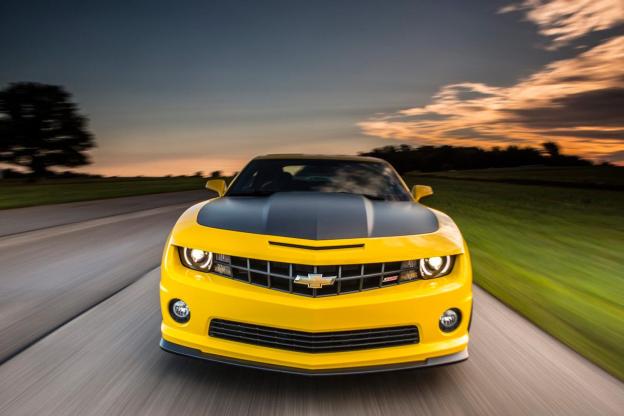 Bowties went out of style a long time ago, but nobody told Chevrolet.
Bowties went out of style a long time ago, but nobody told Chevrolet.
Chevy’s iconic badge, known affectionately as the bowtie, turns 100 years old this year. Introduced in 1913 on the 1914 model year H-2 Royal Mail and H-4 Baby Grand, it’s origin remains somewhat of a mystery.
A 1968 interview with Catherine Durant, widow of Chevy co-founder and bowtie creator William C. Durant, said the design came from a newspaper ad Mr. Durant saw while on vacation in Hot Springs, Virginia.

Mrs. Durant never said what the ad was for, but Chevrolet historian Ken Kaufman was able to find a bowtie-shaped ad for Coalettes, a refined coal product of the Souther Compressed Coal Company, that would have appeared at roughly the same time as the Durants’ vacation.
Did Chevrolet steal its badge from a coal company? We’ll never know for sure, but we do know that the bowtie has graced some amazing cars over its 100 years of existence. Here are the five most memorable.
 Suburban
Suburban
The Suburban name has been in continuous use since 1935, making it Chevy’s oldest model. It started out as a beefed-up station wagon, eventually morphing into one of the first full-size SUVs.
This truck spent most of its career as a work vehicle, until the SUV boom of the 1990s. Then it became the darling of, appropriately enough, suburban families looking for something cooler than a station wagon or minivan.
The Suburban’s popularity with pre-recession Soccer Moms and the FBI (in all-black of course) has made it a fixture on American roads.
 Corvette
Corvette
It’s the Corvette, is there really anything else to say? The two-seater known as ‘America’s sports car” is celebrating its own 60th anniversary this year with an all-new seventh-generation model.
Introduced in 1953, the Corvette has been everything from a compact runabout to a muscle car to a supercar aimed at Ferrari and Porsche. Today, it’s name is probably the most recognizable of any American car.
 “Tri-Five” 1955-1957 Bel Air
“Tri-Five” 1955-1957 Bel Air
If there is one pure and ideal image of an American car, it has to the “Tri-Five” Chevy. Plenty of cars in the 1950s had chrome and tailfins, but the 1955, 1956, and 1957 (pictured above) Chevys turn those styling trends into iconography.
This was especially true of the top Bel Air models, which featured so much trim that they looked more like spaceships than cars. Ask anyone to picture a classic American car, and they’ll probably conjure up one of these.
They also featured Chevy’s first V8, the now-legendary small-block, which debuted on the 1955 model. With that engine, these cars established Chevy as a builder of performance cars.
 Camaro
Camaro
No list of memorable Chevy’s would be complete without the Camaro, the bowtie brand’s most enduring muscle car.
Introduced in 1967, the Camaro (and its Pontiac Firebird twin) was GM’s answer to the Ford Mustang. It never sold quite as well as the original pony car, but it has been nearly as persistent.
From the 1960s SS, Yenko, and Z/28 to the 1980s IROC-Z, the Camaro has always given car enthusiasts what they wanted (or at least tried to) as the automotive landscape shifted. It took a brief hiatus in 2002, coming back fully redesigned and ready to renew its fight with the Mustang in 2010.
 Volt
Volt
It’s rare for a company with as many hallowed nameplates as Chevy to try something completely different, but that’s exactly what it did with the Volt. The car known as “GM’s Moon Shot” was the first mass-produced plug-in hybrid, attempting to strike a balance between the convenience of a conventional hybrid and the efficiency of a pure EV. Fortunately for Chevy, the car has achieved orbit and is popular.
While some might debate the Volt’s success at achieving that design brief, or its utility as an actual car, it definitely represents a paradigm shift. Unlike all of Chevy’s other greatest hits, the Volt wasn’t designed to be fast, haul things, or coddle its occupants. It added a new aspect of automotive performance to Chevy’s lineup: efficiency.
Got a favorite Chevy? Tell us about it in comments.







